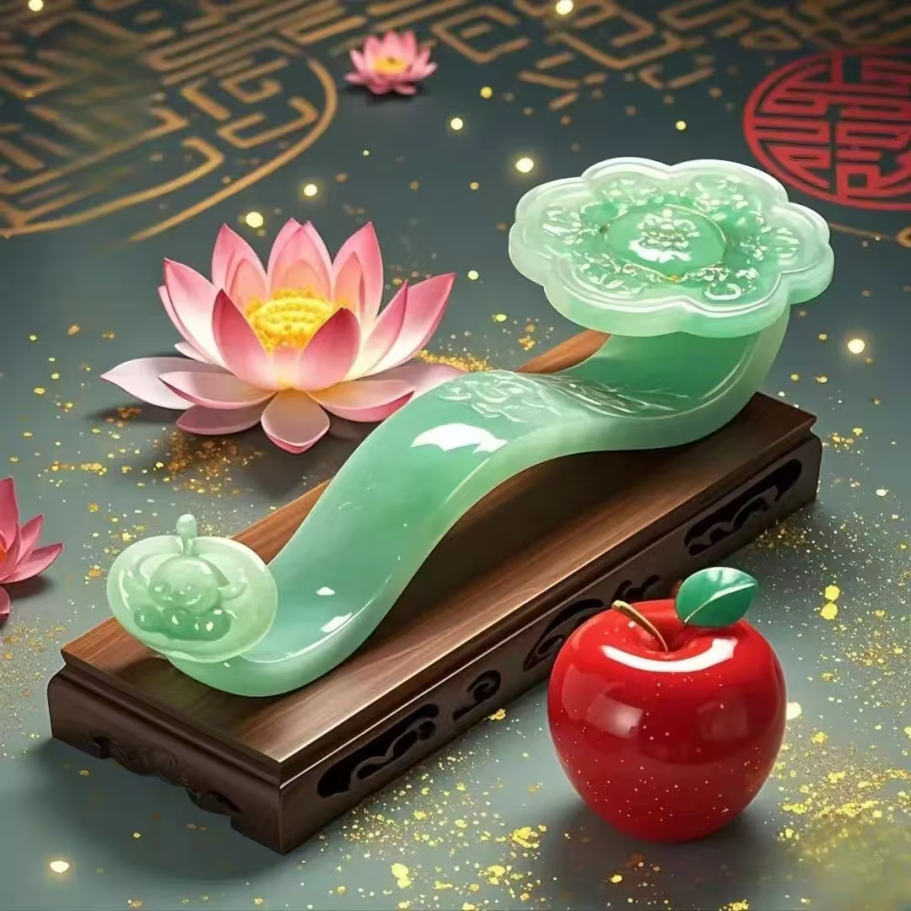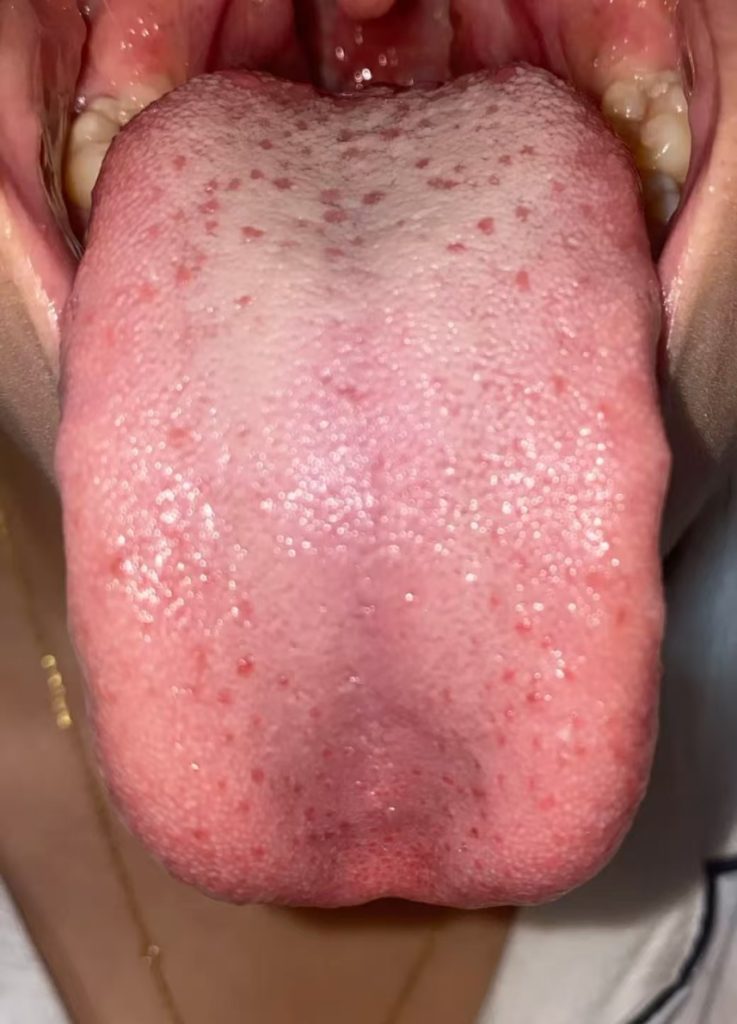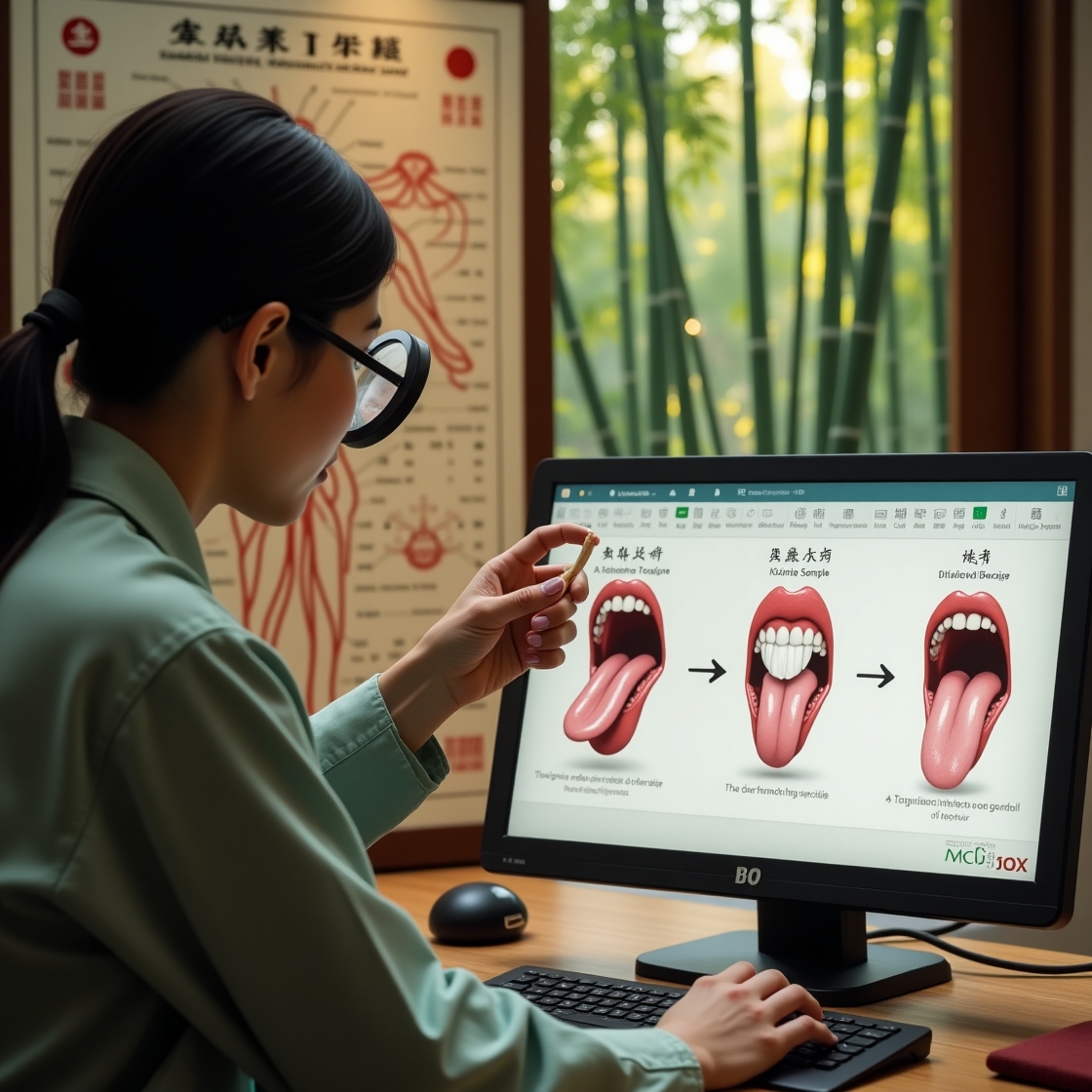一、如意舌的定义与舌象特征
1. 如意舌的命名与形态
- 命名依据:如意舌指的是上焦和下焦凹陷,形状像如意般的舌象。上凸下凹,中间高、两端低,舌根凹陷且干燥。

- 舌象分类:类型舌象特征对应病机阴虚型如意舌舌根凹陷、舌苔白腻或剥落下元亏虚,虚阳上浮阳虚型如意舌舌根凹陷、舌淡嫩无苔肾阳不足,水湿不化
2. 舌象图谱解析

- 图1:舌前凹陷伴裂纹,舌根白腻(阴虚火旺)

- 图2:舌根凹陷苔白滑,舌边齿痕(阳虚水泛)

- 图3:舌中部凹陷伴星点舌(气阴两虚)
二、病机探析:下元亏虚与宗气下陷
1. 下元亏虚的病理机制
如意舌病机多为下元亏虚,上焦大气下陷。
- 肾精不足:腰膝酸软、夜尿频多(肾阴虚:五心烦热;肾阳虚:畏寒肢冷)。
- 舌象关联:舌根凹陷程度与肾精亏损呈正相关(舌根越凹,肾虚越重)且舌根部两侧也较窄。
2. 上焦宗气下陷的病理机制
- 宗气功能:张锡纯《医学衷中参西录》:“宗气司呼吸,贯心脉。”
- 症状表现:心悸气短、胸闷乏力(舌前凹陷伴裂纹)。
- 凭舌断症:患者多表现为腰腿酸软无力,根据阳虚阴虚可能会存在脚凉或脚心发热,或者阴阳两虚,脚凉脚热都会存在。(这里的症状只说凭舌断症的高频症状)
3. 分型论治方案
凭舌用药:补肾精的药一般都会用上,舌根凹陷代表有形物质不足。
若肾阳不足,可选杜仲、续断、狗脊、鹿角胶,若肾阴不足,可选用熟地黄、山萸肉、龟板等。具体用药看个人习惯,有没有虚火上炎。若阴虚火旺可以用引火汤。阳虚,虚阳浮动可以用潜阳封髓丹。啥时候用附子肉桂等,自己看情况。
解析:下元亏虚情况不一,有可能表现为舌根凹陷,干燥发红,甚至有裂纹,无苔,阴虚为主。也有可能表现为白腻苔阳虚为主。
需要注意的是如果舌根无苔,且舌根部位不发红,表现的比较白嫩,这也是阳虚。正因为阳虚,水液不能蒸腾上达,所以可以见白嫩无苔。

舌根凹陷往往是长期形成的,男性如长期手淫,房事不节等。女性如月经淋漓不尽、崩漏等都可见凹陷。
| 证型 | 核心症状 | 推荐方剂 |
|---|---|---|
| 肾阴虚 | 舌红少苔、脚心发热 | 左归丸+龟板胶 |
| 肾阳虚 | 舌淡胖苔白、脚凉尿频 | 右归丸+鹿角胶 |
| 宗气下陷 | 舌前凹陷、动则气喘 | 补中益气汤+升麻葛根汤 |
三、临床案例与调理指南
1. 典型案例解析
舌象及病机:上焦大气下陷(宗气)者,往往表现舌前凹陷,且可能凹陷里面还有裂纹。比如下面这个舌象。

凭舌断症:患者往往会出现心慌、气短、乏力,胸闷等。这是因为宗气管着上焦心肺的功能,宗气不足则会表现在心肺功能问题上。
凭舌用药:一般会考虑到李东垣补中益气汤,张锡纯升陷汤等。
关于上焦大气下陷的舌象会专门写一篇,这里不详写了。
注:最后这两张舌象图片均是作补充说明,如意舌请参考前三张舌象图。
- 案例1:男性,35岁,舌根凹陷苔白腻,主诉腰酸乏力,辨证为肾阳虚,予右归丸调理2个月后舌苔转薄白。
- 案例2:女性,42岁,舌前裂纹凹陷,伴心悸失眠,辨证为宗气下陷,予升陷汤加丹参10g,1个月后胸闷缓解。
四、中医辨证要点与禁忌提醒
1. 如意舌的辨证核心
- 必问症状:腰膝状态、夜尿频率、手足温度。
- 必查体征:舌根凹陷深度、舌苔润燥度。
2. 用药禁忌清单
| 证型 | 禁用药物 | 风险警示 |
|---|---|---|
| 肾阴虚火旺 | 附子、肉桂 | 助火伤阴,加重潮热盗汗 |
| 宗气下陷兼湿阻 | 滋阴药(如熟地黄) | 滋腻碍脾,加重气滞胸闷 |
注意:文中涉及的治法及用药仅供中医同行参考,患者切勿私自服用,否则后果自负。


发表回复